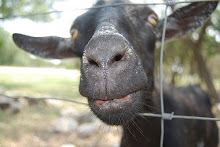This is the space I will use to record methods of educating students (especially secondary students - middle and high school). I want cool stuff; labs and demonstrations.
I will start with a quick summary of one:
Materials: dish soap, baking soda, vinegar
Students, in groups of 3-4, predict what will happen when each of the three pairs of these substances are mixed, and when all three are mixed. These claims/hypotheses are then experimentally tested.
A graphic organizer needs to be prepared for this.
This lab is excellent for tying theory to the real world and emphasizing lab safety without anyone getting hurt. Vinegar, an everyday substance, is acid and can be used to do interesting chemistry with! If a kid gets it in his eyes he will know it, and it will drive home the lessons about protecting eyes, but the vinegar should not do damage if rinsed out thoroughly in a timely fashion.
Another one demonstrates air pressure by putting a marshmallow in a syringe and adding or reducing pressure on the plunger. The marshmallow will shrivel or expand as air pressure increases or decreases inside the syringe.
Before the unit, have students write down what they know, think they know and want to know. Collect the papers and then return them after the unit. Have students write down their errors, new knowledge and what they correctly knew beforehand.
A common steel spoon can be used as both a convex and concave mirror.
A mirror can be used to reflect the image of a lit candle on to a white card. This is interesting and can be used to explore the ideas of images. Using a curved mirror or a lens allows exploration of how distance changes image size and focus.
The projector can be used to illustrate mirror, lens and image ideas.
A prism and a laser pointer are used to study refraction. A glass of water with a pencil in it illustrates this well.
"if i do i die", "hidiho" to remember equation.
One can determine equations from experimental data; this is good for kids.
NaHCO3 + CaCl2 in ziplock; put test tube of water in ziplock, squeeze out air and then spill test tube.
Zn + HCl
Penny in nitric acid - be cautious. It's illegal to destroy money and this reaction gives off toxic fumes.
Soak paper money in rubbing alcohol. Have a wet (but not dripping) newspaper open nearby. Ignite the bill and quickly put it in the newspaper and then shut the newspaper to put out the flame. Students can now observe that the bill is much drier (alcohol burned off, water evaporated off), and that it's warm, but undamaged.
Saturday, November 28, 2009
Subscribe to:
Post Comments (Atom)

No comments:
Post a Comment